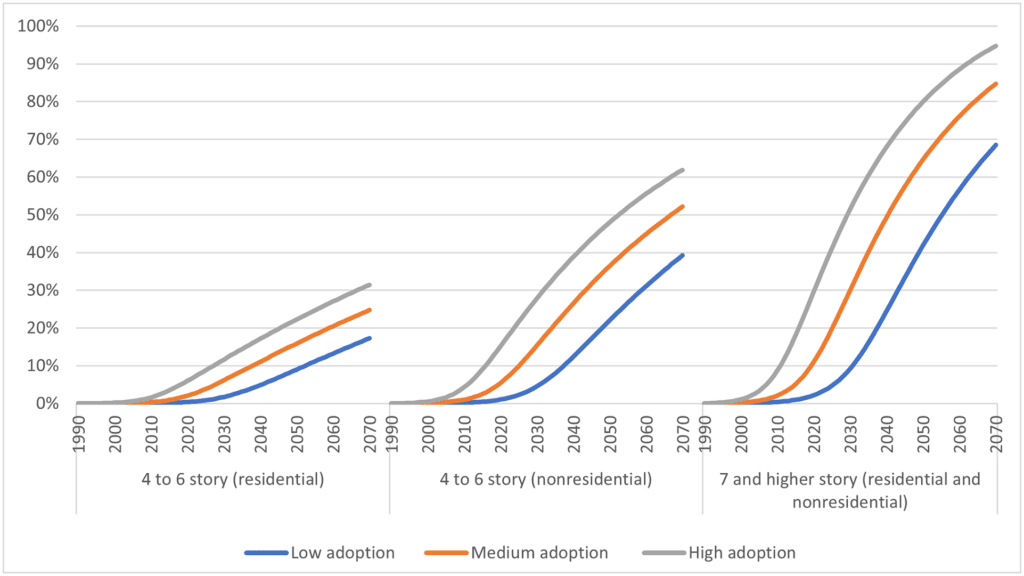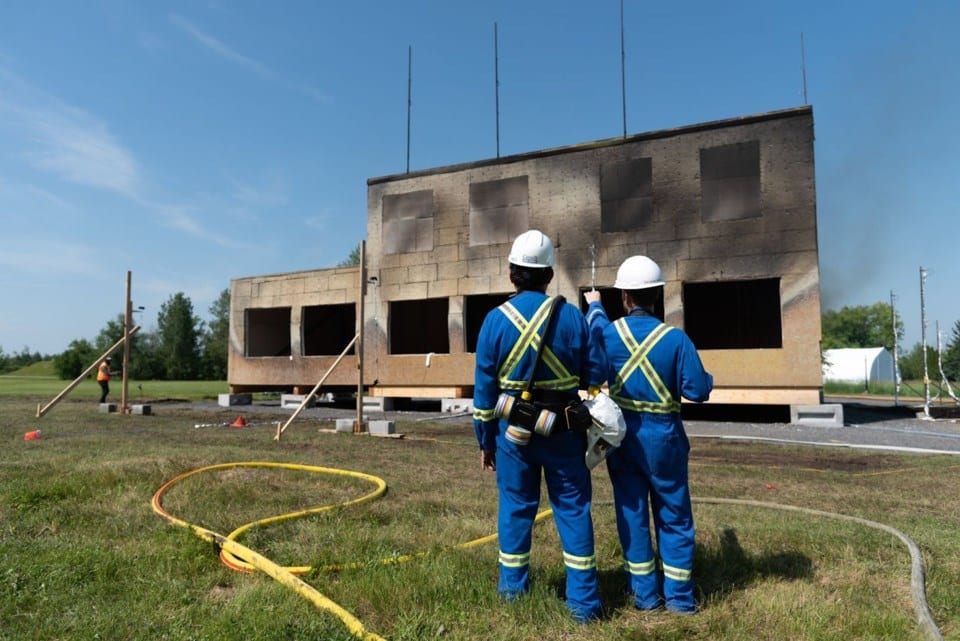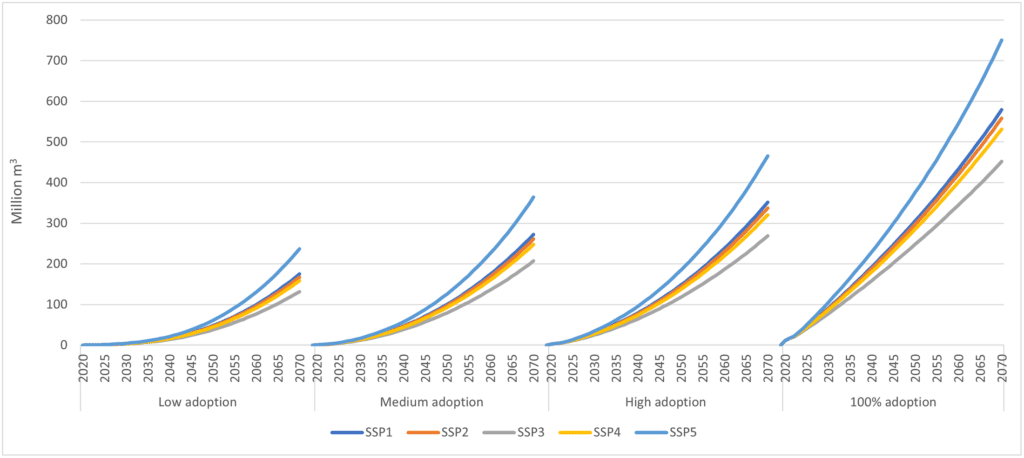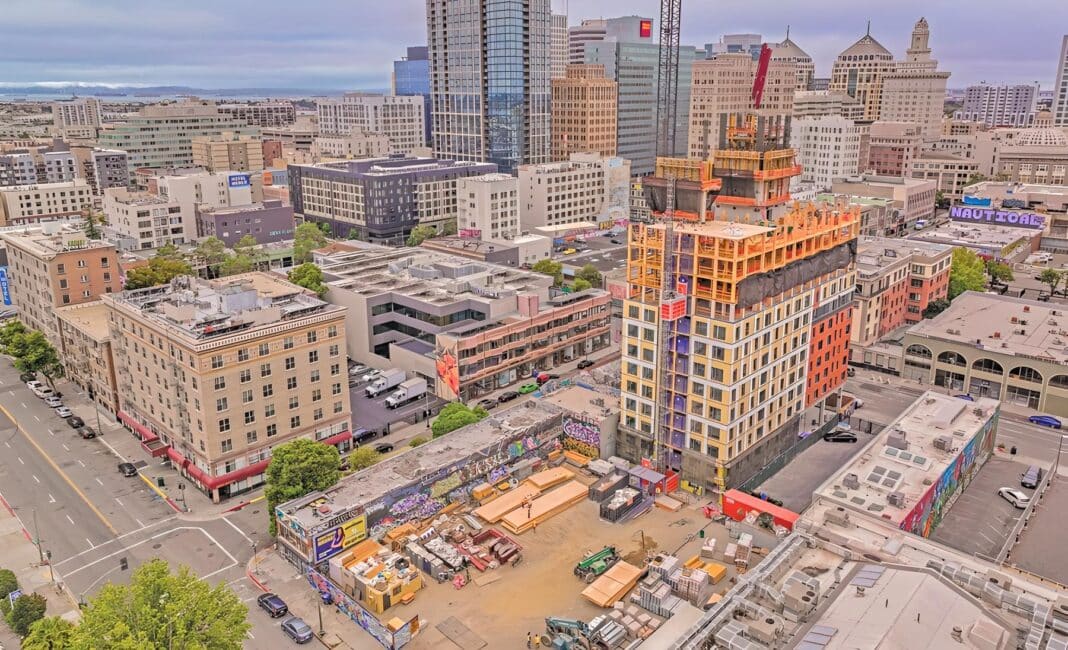More than 2,000 mid-rise and high-rise mass timber buildings have been designed, under construction, or constructed across the US, with the number of buildings growing by 114% during the Covid years alone.
Mass timber makes up just 0.4% of the US softwood industry (or 0.362 million cubic metres). Still, it has the potential to grow to 9-15 million cubic metres per year and provide 9.9-16.5 million tones of “carbon benefit”—about 20% of the US’s HWP carbon sequestration—with high-rise hybrid construction driving a surge of timber builds in the American South.
That is according to a new study published by the University of Georgia, “The potential use of mass timber and associated carbon benefits in the United States,” which, for the first time, has calculated the total market for mass timber products over a 50-year lifespan (from 2020 out to 2070).

The study, funded by the USDA Forest Resources Planning Act through a joint venture between the US Forest Products Laboratory and the University of Tennessee Institute of Agriculture, explored different adoption scenarios in the Northeast, Midwest, South, and West.
According to researchers, “to estimate the alternative trajectories of mass timber uptake in projected mid- to high-rise nonresidential and multifamily residential floor buildings, we developed four scenarios representing low, medium, high, and 100% adoption…which were separated by two building heights: four-to-six stories (mid-rise) and seven stories and higher.”
Mimicking the market adoption trajectory of oriented strand board (or OSB), which grew exponentially between 1990 and 2010, the researchers “used the parameters for OSB diffusion as the starting values, and used existing cross-laminated timber adoption data to scale the CLT diffusion model.”

It found that with greater research into areas that have to date limited its adoption – including in fire and seismic zones – the suite of mass timber products, including cross-laminated timber (CLT), glue-laminated timber (Glulam), nail-laminated timber (NLT) and laminated-veneer lumber (LVL), could supercharge the US’s decarbonisation of the built environment.
“The 100% adoption scenario represents the potential amounts of mass timber use, after satisfying current building code requirements and under the assumption that there are no market barriers or policy constraints for adopting mass timber.”
Under this scenario, the researchers predict that mass timber consumption will grow 452 million cubic metres to 750 million cubic metres over the 50-year projected period, with “the greatest adoption rates projected for the seven-stories and higher,” fuelled by a surge in new buildings in the South (43%), followed by the West (23%), the Midwest (21%) and the Northeast (13%).
“Interestingly, our model suggests relatively slower mass timber adoption rates in four-to-six-storey multifamily residential,” the researchers said, “with projected mass timber adoption rates amongst nonresidential mid-rise buildings much higher.”

In the 100% adoption model, “more than 80% of the projected growth was in nonresidential buildings,” primarily due to the projected larger nonresidential floor areas in this building type.
“However, as expected, in the lower market adoption scenario, the market for mass timber will be 2.6 million cubic metres to 4.7 million cubic metres per year”, representing just 1.7% to 3.1% of the US’s total lumber and wood-based panel consumption for 2022.”
Meanwhile, in the medium and high adoption scenarios, “consumption ranges between 4.1 million cubic metres and 9.3 million cubic metres per year.”
The upshot, according to the researchers, is that mass timber, across all adoption scenarios, will greatly assist the policymakers in achieving its climate goals. “Depending on the scenario, use of mass timber in four-stories-and higher multifamily residential and nonresidential buildings could add 4% to 20% to the current US HWP carbon sequestrian.”
“More than 78% of these benefits come from biogenic carbon stored in buildings using long-lived mass timber products, with avoided embodied carbon thanks to substitution from non-wood products,” they said.
“Our analysis indicates that, with favourable public policies and the removal of barriers to market adoption in the future, it would be possible to increase carbon benefits fivefold.”

The new research comes after Timberlab, one of the country’s largest mass timber manufacturers, announced that it will open a new 250,000-square-foot cross-laminated CLT facility to supercharge mass timber adoption and make it “more affordable and widely usable.”
“Timberlab’s objective is to remove pinch points in the mass timber industry,” according to Chris Evans, Timberlab’s President, who added that “over the last four years, we have added two CNC facilities in Portland, Oregon (on the Pacific Coast), and Greenville, South Carolina (on the East Coast), focused on expanding the supply chain for mass timber.”
The announcement comes after the Biden Administration in October pledged to establish a “Mass Timber Hub” in Portland, Oregon, in its bid “to use advanced material science to develop low-carbon housing solutions.”
Last year, Wood Central reported that the US Army is working with material scientists to develop new “advanced cross-laminated timber” technology using regional species to scale up mass timber use in housing projects, counterterrorism and force protection projects.






